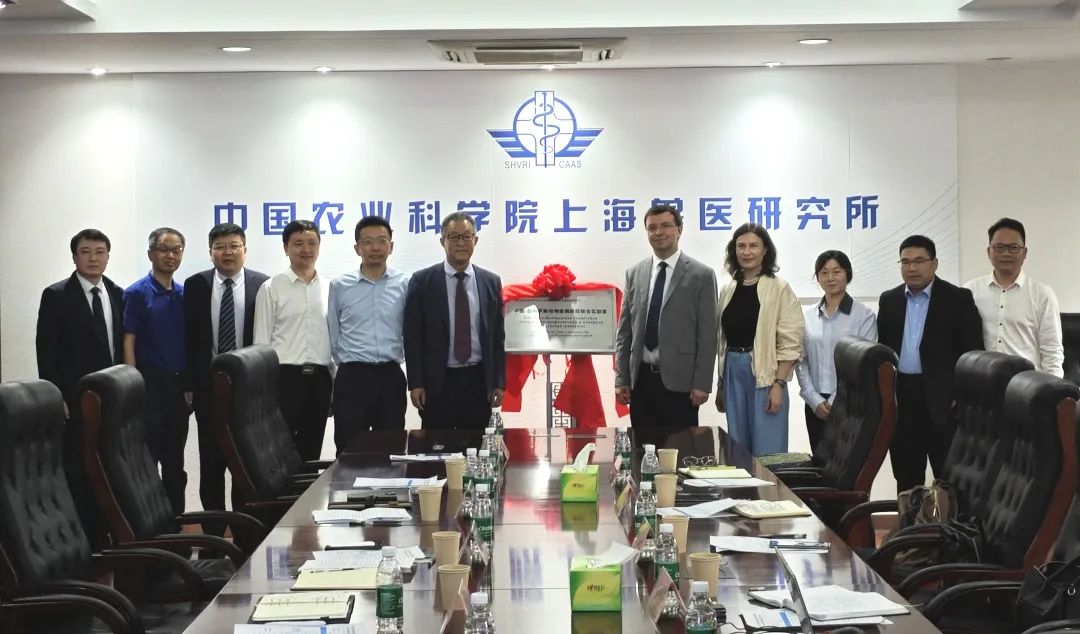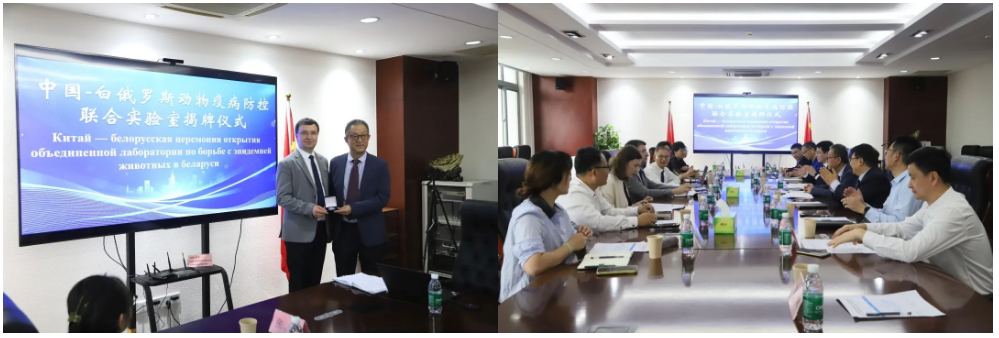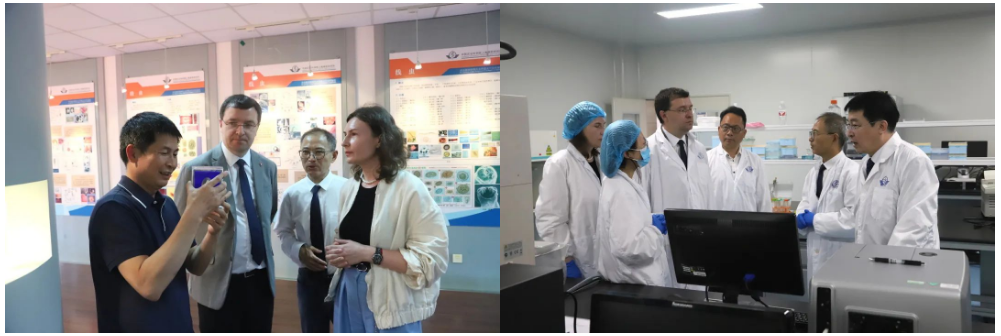
On May 20th, Shanghai Veterinary Research Institute(SHVRI) CAAS and the Biosafety Research Center of CAAS co-hosted the "China-Belarus Forum on Transboundary Animal Disease Prevention & Control" in Shanghai. During this forum, the China-Belarus Joint Laboratory for Animal Disease Prevention and Control was officially unveiled and established.

As two major agricultural nations, China and Belarus shared the same urgent priorities in preventing and controlling transboundary animal diseases, safeguarding agricultural productivity, and ensuring stable supply chains for agricultural products.
In recent years, SHVRI CAAS and Institute of Experimental Veterinary Medicine named of S.N. Vyshelessky (RUE IEV) belong to The National Academy of Sciences of Belarus, have engaged in academic collaborations and faculty exchanges, aiming to establish a broad and in-depth cooperative framework focus on animal disease prevention and control, as well as antimicrobial resistance management.
The establishment of the Joint Laboratory was to combination with the series activities of the "Years of China-Belarus Cooperation in Science, Technology, and Innovations (2024-2025)". This collaboration further deepened two sides’ cooperation in rapid diagnostic technologiesfor major transboundary animal diseases and novel infectious diseases; vaccine R&D and cross-border transmission containment mechanisms.

Han Xuesong, the Secretary of the Party Committee of SHVRI CAAS presided the forum and the ceremony.
Ma Zhiyong, Director of SHVRI CAAS, attened the meeting and stated that as a key component of China's national strategic scientific force, SHVRI has achieved breakthroughs in animal disease surveillance, zoonosis control, and novel vaccine R&D in recent years, actively advanced international cooperation on prevention technologies and applications for major animal diseases. This academic symposium constitutes a concrete action to implement the important discourse of General Secretary Xi Jinping on "Building a Community with a Shared Future for Mankind", and also serves as a practical response to the Belt and Road Initiative, deepened scientific collaboration under the "2024-2025 China-Belarus Year of Science, Technology, and Innovation".
Sergei Chizhik, First Vice Chairman of the Presidium of the National Academy of Sciences of Belarus, stated in his video address that major transboundary animal and plant diseases have now transcended national borders, becoming critical global risks threatening human health worldwide, agricultural economies, and ecological security. He emphasized that the urgent need for the international community to wield science and technology as a shield to establish a joint prevention and control network. As an active participant in the global agricultural market, the cooperation between Belarus and China holds strategic significance for ensuring livestock security in countries along the Belt and Road Initiative.
Borisovets, Director of the institute of Experimental Veterinary Medicine named of S.N. Vyshelessky (RUE IEV) belong to The National Academy of Sciences of Belarus, shared the overview of the institute, and expressed his expectation that the laboratory would become a center of excellence for China-Belarus scientific collaboration in animal disease control. He emphasized that through academic exchanges, technical training, and joint postgraduate programs, the laboratory would cultivate professionals with both international perspectives and practical capabilities. Borisovets noted that the Sino-Belarusian cooperation not only benefits both nations but also provides solutions for global animal health governance and agricultural biosecurity. He affirmed their commitment to collaborating with Chinese counterparts in formulating international standards, sharing expertise in disease control, and contributing wisdom to the prevention of major transboundary animal diseases.
Zhang Lisheng, Deputy Director of SHVRI CAAS, introduced the institute’s development progress, highlighting the operational achievements of key facilities such as the Veterinary Drug Evaluation Center and the Scientific Instrument Sharing Platform. Together with Belarusian experts, he revisited the phased milestones in establishing the joint laboratory. Professor Li Tao reported recent advancements in collaborative research on animal vaccine development and antimicrobial resistance (AMR) management with Belarusian partners. Jiang Wei, Deputy Director of the Scientific Research Department, outlined SHVRI’s international cooperation framework. Professor Dong Hui, Sun Zhuyun, and Shi Yonghong delivered thematic presentations and engaged in discussions on issues of interest to Belarusian experts.
Huang Shixin, Director of the Shanghai Animal Disease Control Center, emphasized that as a densely populated metropolis, Shanghai must prioritize surveillance, risk analysis, and scientific control of zoonosis diseases and major animal epidemics. He proposed deepened China-Belarus scientific cooperation on shared targets such as African Swine Fever (ASF) and avian influenza.
Shi Biao, Director of the Biotechnology Research Institute, Shanghai Academy of Agricultural Sciences, highlighted the rapid advancement of biotechnology. Both nations focus on applying emerging technologies—including gene editing and synthetic biology—in agriculture. Joint R&D and safety evaluation testing will significantly advance agricultural biotech products in global markets.
Wang Rui, Deputy Director of the Shanghai Wildlife Conservation and Protected Area Research Center, urged heightened attention to zoonotic pathogens carried by wildlife and invasive alien species amid thriving natural ecosystems. He called for in-depth collaborative research between China and Belarus in this domain.

Experts from the National Academy of Sciences of Belarus, Institute of Experimental Veterinary Medicine named of S.N. Vyshelessky (RUE IEV) belong to The National Academy of Sciences of Belarus, Shanghai Animal Disease Prevention and Control Center, Shanghai Research Center for Wildlife and Nature Reserves, Biotechnology Research Institute of Shanghai Academy of Agricultural Sciences, Huazhong Agricultural University, China - Russia International Technology Innovation Center in Zhuji, Zhejiang, and SHVRI CAAS attended the forum.

